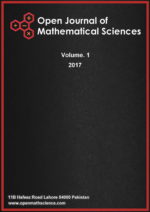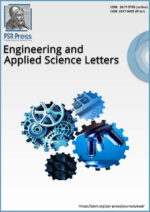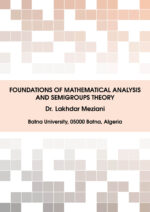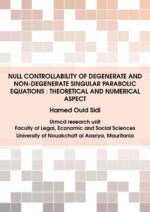Ptolemy Scientific Research Press (PSR Press)is a highly regarded publisher of scientific literature dedicated to bringing the latest research and findings to a broader audience. With a focus on cutting-edge research and technology, Ptolemy Scientific Research Press offers a range of publications catering to professionals, researchers, and student’s needs. Whether looking for information on the latest breakthroughs in physics, biology, engineering, or computer science, you can trust Ptolemy Scientific Research Press to deliver insightful, accurate, and engaging content. With its commitment to quality, accessibility, and innovation, Ptolemy Scientific Research Press is an essential resource for anyone interested in science and technology.

Latest Published Articles
OMA-Vol. 2 (2018), Issue 1, pp. 66–73 | Open Access Full-Text PDF
Saba Noreen, Atif Mahmood
Abstract:A line graph has many useful applications in physical chemistry. Topological indices are numerical parameters associated to a structure and, in combination, determine properties of the concerned material. In this paper, we compute the closed form of Zagreb polynomilas of all generalized class of carbon nanocones and compute important degree-based topological indices.
General solution of casson fluid past a vertical plate subject to the time dependent velocity with constant wall temperature
OMA-Vol. 2 (2018), Issue 1, pp. 47–65 | Open Access Full-Text PDF
Allia Naseem
Abstract:Unsteady free convection flow of Casson fluid over an unbounded upright plate subject to time dependent velocity \(U_{o}f(t)\) with constant wall temperature has been carried out. By introducing dimensionless variables, the general solutions are obtained by Laplace transform method. The solution corresponding to Newtonian fluid for \(\gamma \rightarrow \infty\) is obtained as a limiting case. Exact solutions corresponding to (i) \(f(t)=f H(t)\), (ii) \(f(t)=f t^{a}\), \(a > 0 \) (iii) \( f(t)=f H(t)cos(\omega t)\) are also discussed as special cases of our general solutions. Expressions for shear stress in terms of skin friction and the rate of heat transfer in the form of Nusselt number are also presented. Velocity and temperature profiles for different parameters are discussed graphically.
New type integral inequalities for three times differentiable preinvex and prequasiinvex functions
OMA-Vol. 2 (2018), Issue 1, pp. 33–46 | Open Access Full-Text PDF
Huriye Kadakal, Mahir Kadakal, İmdat İşcan
Abstract:In this paper, a new identity for functions defined on an open invex subset of set of real numbers is established, and by using the this identity and the Hölder and Power mean integral inequalities we present new type integral inequalities for functions whose powers of third derivatives in absolute value are preinvex and prequasiinvex functions.
Some new Hermite-Hadamard-Fejér type inequalities for harmonically convex functions
OMA-Vol. 2 (2018), Issue 1, pp. 19–32 | Open Access Full-Text PDF
Sercan Turhan, İmdat İşcan
Abstract:In this paper, we gave the new general identity for differentiable function. As a result of this identity some new and general fractional integral inequalities for differentiable harmonically convex functions are obtained.
Non-convex hybrid method corresponding to Karakaya iterative process
OMA-Vol. 2 (2018), Issue 1, pp. 08–18 | Open Access Full-Text PDF
Samina Kausar, Muhammad Asif, Mubeen Munir
Abstract:In this article we present non-convex hybrid iteration algorithm corollaryresponding to Karakaya iterative scheme [1] as done by Guan et al. in [2] corollaryresponding to Mann iterative scheme [3]. We also prove some strong convergence results about common fixed points for a uniformly closed asymptotic family of countable quasi-Lipschitz mappings in Hilbert spaces.
A new third-order iteration method for solving nonlinear equations
OMA-Vol. 2 (2018), Issue 1, pp. 01–07 | Open Access Full-Text PDF
Muhammad Saqib, Zain Majeed, Muhammad Quraish, Waqas Nazeer
Abstract:In this paper, we establish a two step third-order iteration method for solving nonlinear equations. The efficiency index of the method is 1.442 which is greater than Newton-Raphson method. It is important to note that our method is performing very well in comparison to fixed point method and the method discussed by Kang et al. (Abstract and applied analysis; volume 2013, Article ID 487060).








